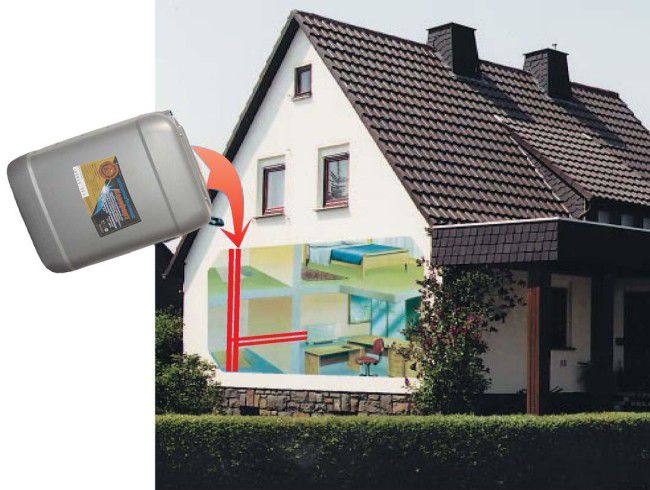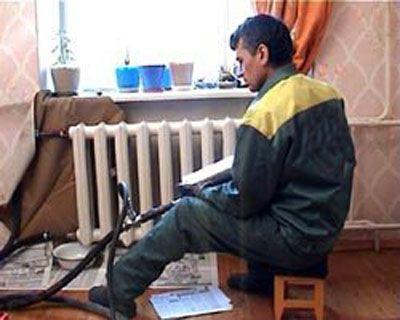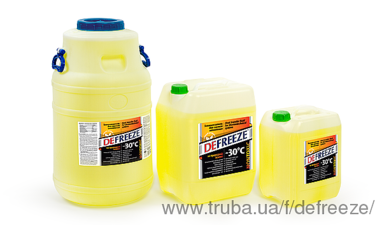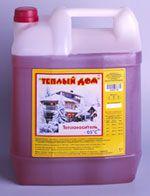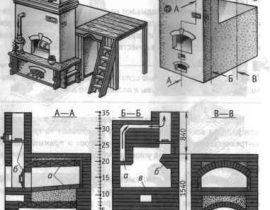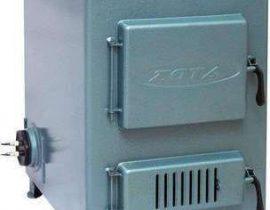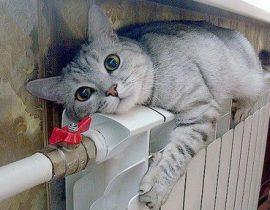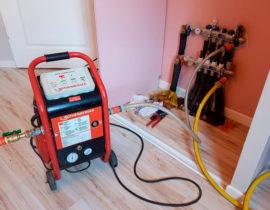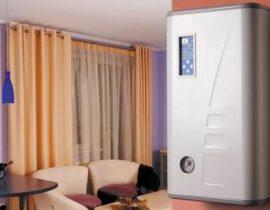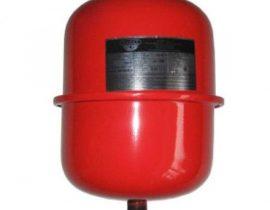Autonomous heating systems in country houses can operate on various principles. A very popular design for creating private heating systems is equipment with a liquid coolant.
It consists of a heating boiler, piping system and heating radiators.
Normally, ordinary water is used as the heat carrier. In order to prevent the formation of scale in such "technical" water, chemical additives are often added. But such a system requires constant heating - in the event of freezing of water inside the pipeline system, the latter fails. In order to ensure the possibility of pauses in work, an antifreeze liquid for heating is used.
Content
Why is it better to use antifreeze liquid in the heating system, and not water?
Antifreeze liquid (or antifreeze) in the heating system greatly simplifies the work with the equipment.If you use ordinary water as a coolant, then the heating system has to be equipped with additional devices, such as a valve for venting air from the expansion tank. In addition, in the variant of a country house that is not constantly used, water will have to be drained or filled into the heating system at each visit, otherwise it will simply freeze in winter.
On the one hand, water has a higher heat capacity and, when moving through the pipelines of the heating system, retains heat longer. This is what causes the wider use of water as a coolant in private country houses.
Can antifreeze be used?
Antifreeze or antifreeze liquids are known to almost everyone. They are widely used in car cooling systems in winter. In a car engine, antifreeze carries excess heat away from the engine, cooling it. At the same time, even in the most severe frosts, it does not freeze. It is these properties - the ability to transfer heat even at the lowest temperatures - that led to the use of antifreezes for the construction of heating systems. Especially important is the use of such a coolant in a system, part of the pipeline of which passes through an open area.
A good feature of the "anti-freeze" is that it is less than ordinary water that provokes the formation of corrosion on the inner surface of pipeline systems. Another undoubted advantage is the absence of suspended solutions of limestone in non-freezing liquids - so you can not worry about the possible formation of scale.
There are several modifications of non-freezing liquids that can be used in heating systems. The choice of a specific variety is made taking into account climatic conditions and the configuration of your home's heating system.
What is a flushing fluid for a heating system and does it need to be flushed?
In addition to the coolant itself, when operating the heating system, you will also have to purchase a liquid intended for flushing with pipelines and heating radiators.
Of course, in extreme cases, it is possible to flush the inner surface of the pipes with ordinary tap water, but it is better to do this with the help of special liquids, in which special chemical additives are introduced.
An alternative flushing option may be to use water with a caustic soda solution added to it. Such a mixture is poured into the heating system and remains inside it for about an hour. The baking soda solution comes into contact with scale on the inside of the system and dissolves it. In addition, a soda solution will dissolve areas with corrosion.
How to choose a liquid for the heating system?
- First of all, it is necessary to determine the operating parameters of the system. Here, two extreme values \u200b\u200bwill be important to you - the maximum temperature of the coolant during heating in the boiler and the minimum ambient temperature.
- Next, you need to carefully study the technical characteristics of your heating system. Actually, the main attention should be paid to the characteristics of the heat exchanger in the boiler. Some manufacturers may not allow the use of antifreeze fluids.
- And, finally, after determining the admissibility of using an antifreeze liquid and its possible temperature parameters, proceed directly to choosing the brand of liquid, focusing on its lowest toxicity. Still, the heating system will be located in the living room, and possible fluid leaks should not lead to poisoning.
The use of alcohol as a coolant
No matter how blasphemous it may sound for a man's ear, it is allowed to use alcohol as a coolant. Alcohol does not freeze and can be used over a wide temperature range. Naturally, technical alcohol is used in this capacity, which is a deadly poison for humans. However, many manufacturers of boilers and heat exchangers are critical of the use of liquids such as bischofite or ethylene glycol as a heat carrier.
The disadvantage of using pure alcohol as a coolant is its high volatility - about five liters per year will evaporate through microscopic pores in the system.
What brand of antifreeze to choose?
An important factor in choosing an antifreeze fluid for a heating system will be the selection of the compatibility of the fluid with the material of manufacture of the pipeline system. So, as a material for the manufacture of pipes in heating systems, polypropylene, aluminum, steel or cast iron can be used. With each of the materials, certain brands of antifreeze fluids may behave differently.
In addition, the maximum temperature regime to which the coolant fluid will be exposed is also very important. This parameter largely depends on the fuel used in the heating system.So liquid fuels, such as diesel fuel, have a much higher combustion temperature than ordinary birch firewood. Accordingly, the coolant fluid in such systems will heat up to a greater extent.
When using antifreeze, it is necessary to take into account its increased fluidity and permeability caused by a small coefficient of surface tension. As a result, antifreezes can literally seep through the smallest pores in the joints. Thus, the use of antifreeze involves a thorough revision of all connecting nodes in the heating system of your home.
Please note that different brands of antifreeze from different manufacturers may have different chemical composition. "Antifreeze" is just a generic name for a kind of anti-freeze fluid. Accordingly, the behavior of each liquid with an individual chemical composition will also be individual.
Consequences of using anti-freeze with ethidene glycol
Very often, manufacturers introduce ethylene glycol into the composition of the antifreeze liquid. Remember that ethylene glycol is a harsh and toxic chemical. As a result, when operating heating systems with coolant-antifreeze, a number of safety measures must be observed. In any case, when using antifreeze fluids, the heating system and the hot water system of your home must be physically separated to prevent mixing of fluids used in them. In extreme cases, with a real possibility of coolant entering the hot water supply system, it is necessary to use propylene glycol. It is less effective than ethylene glycol, but much less toxic.
Before the first filling of antifreeze liquid into the heating system, do not forget to flush the inner surface of the pipelines.
How is antifreeze made?
The main component of antifreeze liquids is ordinary water. And the efficiency of the heating system largely depends on its quality and purity. The matter is that the smallest impurity of pollution in water are those sites around which its freezing begins. Well-purified, distilled water does not freeze even at low sub-zero temperatures.
In addition, impurities in water are scale that forms on the inner walls of pipelines. The cleaner the water used in the production of antifreeze liquid is, the less likely it is that scale will form, the less
To reduce the negative effects in the production of "anti-freeze" various chemical additives are used. They are completely soluble in water and prevent the onset of corrosion of metal surfaces, playing the role of inhibitors in the ongoing chemical reactions.
What additives are added to antifreeze fluid?
Among the chemical additives used in the production of "antifreeze" are the following:
- Inhibitors, that is, substances that inhibit chemical reactions with the metal. These include silicates and phosphates.
- Hybrid additives that perform several functions at the same time. These mixtures are organic and inorganic.
- Additives based on carbosilicates. This is a fairly recent solution in this industry and it has a broad perspective in development.
Advantages and disadvantages of a coolant based on antifreeze
The most important advantage of antifreeze-based liquids when used in heating systems is their ability to maintain a fluid state at low temperatures. Even at very low temperatures, such a liquid does not become a solid, but forms a slurry-like substance that cannot damage the pipelines and equipment of your system. In addition, at low temperatures and partial freezing, antifreeze does not increase in size. After raising the temperature, it completely restores its properties.
But for such efficiency at low temperatures, antifreeze has to pay with a reduced heat capacity, which is reduced by up to 15 percent relative to ordinary water. This leads to an increased consumption of energy carriers for heating the liquid in the heating system. Also, when using "anti-freeze" you will have to use more powerful heating radiators, with a large number of sections. Antifreeze is more viscous than water and will have to be moved through the system by more powerful pumps.
Please note that after filling the heating system with non-freezing liquid, it must be allowed to stand for two to three hours. During this time, the air present in it will come out of the liquid. Only then can the system be pressurized.
To avoid air leakage into the liquid during the operation of the system, it is necessary to install an expansion tank in it. Compared to systems running on water, the tank must have a larger volume, which is associated with a large coefficient of expansion from heat for "anti-freeze". Also, anti-freeze liquid may have a tendency to foam, which must also be compensated for by the expansion tank.
When operating a heating system with antifreeze, it is unacceptable to allow it to overheat, which can lead to irreversible consequences and require a complete replacement of the fluid in the system.
Training video on antifreeze liquids for heating systems in private homes

